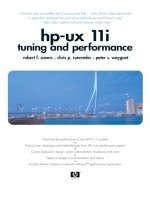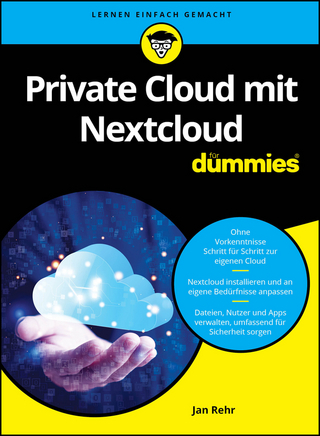
HP-UX 11i Tuning and Performance
Prentice Hall (Verlag)
978-0-13-143349-6 (ISBN)
- Titel ist leider vergriffen;
keine Neuauflage - Artikel merken
Maximizing the performance of Unix systems is a challenge that requires a specialized understanding of operating system behavior and an intimate acquaintance with system tools that assist in tuning. This book helps sysadmins, net admins, developers, and capacity planners maximize the performance of HP-UX systems, resolve bottlenecks, and design applications for maximum performance. HP-UX 11i Tuning and Performance takes the guesswork out of maximizing HP-UX performance. It provides a comprehensive, systematic performance management methodology that addresses every stage in the lifecycle of an HP-UX system. Three of HP's leading performance experts present specific metrics, symptoms, and solutions for each key element of an HP-UX system, including hardware, the OS platform, and application development. This edition is completely updated with the many new processor and system families that use HP-UX since the first edition appeared in 1999. This book introduces the best generic UNIX and HP-UX specific tools for performance management and demonstrates practical ways to instrument HP-UX systems so that your measurements truly represent real-world performance. This new edition also takes into account the latest processors, systems, storage devices, I/O connections, new and changed software tools, new HP-UX features, high availability environments, and Java on HP-UX.
ROBERT F. SAUERS is HP’s Chief Architect for Mission Critical and Disaster Tolerant Solutions. He established and ran the HP-UX porting and benchmarking center where many of this book’s techniques were developed, and created the HP-UX tuning class this book is based on. CHRIS P. RUEMMLER is an HP Software Engineer responsible for HP-UX performance. For over ten years, he has been involved with HP-UX performance, addressing issues ranging from compilers to I/O. PETER S. WEYGANT is Principal Consultant with PSW Consulting, Inc., a leading technical writing and usability engineering services firm. A former Learning Products Engineer in HP’s High Availability Lab, he authored Clusters for High Availability (Prentice Hall).
About the Authors.
Acknowledgments.
1. Introduction to Performance Management.
Application Developer's Perspective. System Administrator's Perspective. Total System Resource Perspective. Rules of Performance Tuning.
2. Performance Management Tasks.
Workload Estimation. Benchmarking. Performance Characterization. Performance Forecasting or Prediction. Application Optimization. Capacity Planning. Performance Problem Resolution.
3. A Performance Management Methodology.
Assessment. Measurement. Interpretation and Analysis. Identifying Bottlenecks. Tuning or Upgrading.
4. Kernel Instrumentation and Performance Metrics.
Approaches to Measuring. Kernel Instrumentation and Measurement Interface. Performance Metrics Categories. Summary.
5. Survey of Unix Performance Tools.
Multipurpose Diagnostic Tools. CPU Diagnostic Tools. Disk Diagnostic Tools. Memory Diagnostic Tools. Performance Characterization and Prediction Tools. Process Accounting Tools. Application Optimization Tools. Network Diagnostic Tools. Resource Management Tools.
6. Hardware Performance Issues.
Terminology. Processor Characteristics. Multi-Processing. Cache Memory Performance Issues. Main Memory Performance Issues. I/O Performance Issues. PA-RISC Systems. Itanium¨ Systems.
7. CPU Bottlenecks.
Processes and Threads. Scheduling. System Partitioning. Traps and Protection Violations. Global CPU Metrics. Typical Metric Values. Symptoms of a CPU Bottleneck. CPU Use and Performance Tools. Tuning CPU Bottlenecks.
8. Memory Bottlenecks.
Virtual Address Space. Memory Organization. Paging Control. File Access. Process and Thread Execution. Malloc'ed Memory. System V Shared Memory. Shared Libraries. Memory Management Policies. Sizing Memory and the Swap Area. Memory Metrics. Types of Memory Management Bottlenecks. Expensive System Calls. Tuning Memory Bottlenecks. Memory-Related Tuneable Parameters.
9. Disk Bottlenecks.
Disk Hardware Descriptions. Review of Disk I/O Concepts. Logical Volume Manager Concepts. VxVM Volume Manager. Shared-Bus Access to Disks. File Systems and the Kernel. File System Types. Disk Metrics. Types of Disk Bottlenecks. Expensive System Calls. Tuning Disk Bottlenecks. Database Issues. Disk-Related Tuneable Parameters.
10. Network Bottlenecks.
Networking Hardware Descriptions. Review of Networking Concepts. Networking Access. Networked File System. Clusters. Network Metrics. Types of Network Bottlenecks. Expensive System Calls. Tuning Network Bottlenecks. Network-Related Tuneable Parameters. Web Server Tuning Issues. Database Server Tuning Issues.
11. Compiler Performance Tuning.
Compilers and Optimization. Optimization Levels. Compiling for a Target Runtime Environment. Finer Control Over Optimization. Linker Optimizations. Profile-based Optimization. Specific Options for Fortran and COBOL. Why Does Optimization “Break” Applications? Debugging Optimization Problems. Porting Applications. Code to Demonstrate Optimization Effects.
12. Java Run-time Performance Tuning.
Overview. Performance Issues. Versions on HP-UX. HP-UX Tuneable Parameters and Java. Using Large Java Heap Sizes. Performance Options.
13. Designing Applications for Performance.
Tips for Application Design. Shared Versus Archive Libraries. Archive Libraries. Choosing an Inter-Process Communication (IPC) Mechanism. Trade-offs with Network System Calls. Instrumenting an Application for Performance Monitoring.
14. Application Profiling.
Caliper. CXperf. gprof. Puma. HPjmeter.
Appendix A. Performance Tools Alphabetical Reference.
Appendix B. HP-UX Version Naming Reference.
Appendix C. Dynamically Tuneable Parameters.
Index.
| Erscheint lt. Verlag | 7.4.2004 |
|---|---|
| Reihe/Serie | Hewlett-Packard Professional Books |
| Verlagsort | Upper Saddle River |
| Sprache | englisch |
| Maße | 235 x 178 mm |
| Gewicht | 866 g |
| Themenwelt | Mathematik / Informatik ► Informatik ► Betriebssysteme / Server |
| ISBN-10 | 0-13-143349-0 / 0131433490 |
| ISBN-13 | 978-0-13-143349-6 / 9780131433496 |
| Zustand | Neuware |
| Haben Sie eine Frage zum Produkt? |
aus dem Bereich


